The PVsyst version used for the following Q&A is 6.66 or 6.67, and other versions can be referenced for guidance
1. When the installed capacity of photovoltaic (PV) systems exceeds 1MW, clicking the Layout button for PV module arrangement will result in the pop-up alert box shown in Figure 1. How can this be resolved?
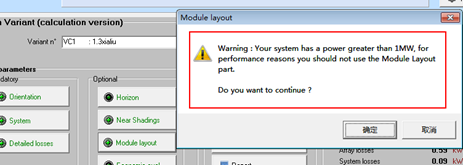
▲Figure 1
[Answer from Teacher Chen]: The hidden parameter settings interface of the PVsyst software imposes certain restrictions on the photovoltaic installed capacity to be simulated. As shown in Figure 2, open the main interface of PVsyst software, click on the menu bar "Preferences" → "Edit hidden parameters", and select the category (Category) shown in Figure 2. It can be observed that when the photovoltaic installed capacity exceeds 1MW, opening the "Layout" function will pop up a "Warring" (warning). If it exceeds 5MW, then the "Layout" function will be unusable. To solve this problem, the limit value of 1000 or 5000 needs to be modified. That is, if the capacity to be simulated is 1.2MW, simply modify 1000 to 1600, and the warning dialog box will not pop up.
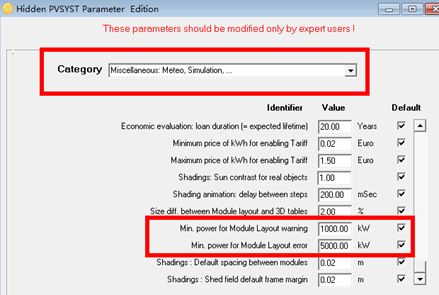
▲Figure 2
2. How to utilize the optimization function (Optimization tool) of PVsyst?
[Answer from Teacher Chen]: Open the PVsyst simulation interface, select Advanced simulation, as shown in Figure 3, and then open the "Optimization tool",First, select the parameters to be optimized, such as inclination (Title), azimuth (Orientation), GCR (land utilization rate), pitch, etc. Then, set the range of variation for the parameters (minimum and maximum values) and the step size. You can choose single-parameter optimization or dual-parameter optimization. As shown in Figure 4, generally speaking, single-parameter optimization takes less time, while multi-parameter optimization takes longer.
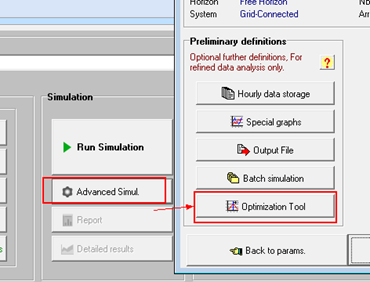
▲Figure 3
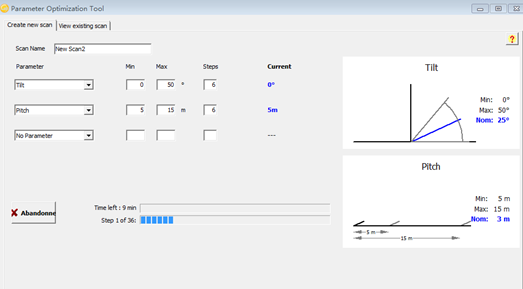
▲Figure 4
As shown in Figure 5, it represents the optimization of the single parameter Install Tilt. When other parameters are not convenient, the curve shows the change in angle. From the figure, it can be seen that the Production is highest at 20°.
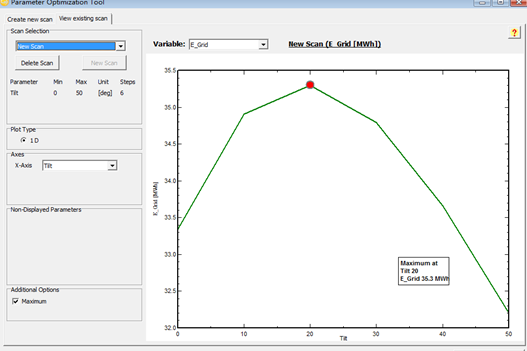
▲Figure 5
Figure 6 illustrates the dual-parameter optimization of tilt and pitch, with the abscissa representing pitch and the ordinate representing angle. Different colors on the graph represent the magnitude of production, with redder colors indicating higher production (larger pitch) and bluer colors indicating lower production (smaller pitch, larger tilt). The small red dots in the graph represent the recommended values for PVsyst. Theoretically, with a constant tilt, the larger the pitch, the less the impact of shading on the front and rear rows. We can switch the graphical presentation to 1D mode (both 1D and 2D), and intuitively understand the relationship between pitch and production from the curve.
[Tips] The evaluation of parameters in simulation results can be conducted based on five variables: grid-connected electricity generation (Egrid), array output electricity (Erray), actual effective radiation received by the photovoltaic plane (GlobEff), shading loss (Shdloss), and radiation on the photovoltaic plane (GobInc). See Figure 7.
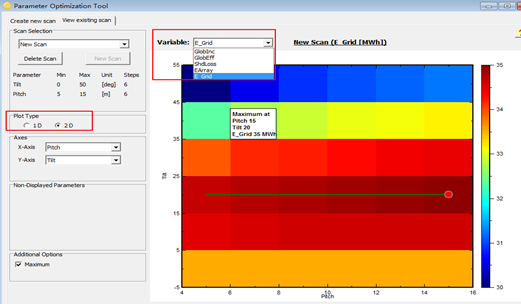
▲Figure 6: Optimization results interface (2D mode)
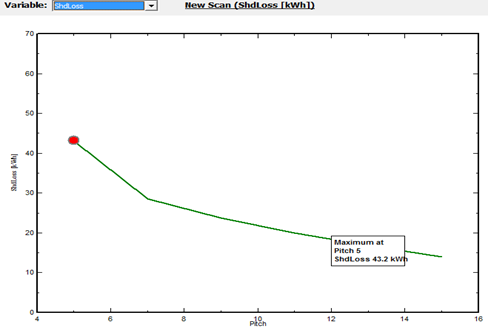
▲Figure 7: Relationship between Shadow Occlusion Loss and Pitch (1D Type)
3. When two photovoltaic arrays with different orientations are connected to the same inverter, how should the inverter be set?
[Teacher Chen's answer]: The orientation of a certain photovoltaic array is inconsistent: strings 1 to 3 (inclination angle 6 degrees, azimuth angle 14°), strings 4 to 6 (inclination angle 6°, azimuth angle -166°). In the PVsyst system settings interface, it is necessary to merge Orientation1# and Orientation2#, that is, select Mixed #1and#2, as shown in Figure 8.
After selecting the inverter, click the "Orient distib." button, as shown in Figure 9. Since the proportion of arrays for both azimuths is 50%, you can click the "Adjust" button with the mouse to set the ratio to 50%. If the set value of the proportion for arrays in different orientations does not match the actual azimuth of the 3D model, the system will report an error.
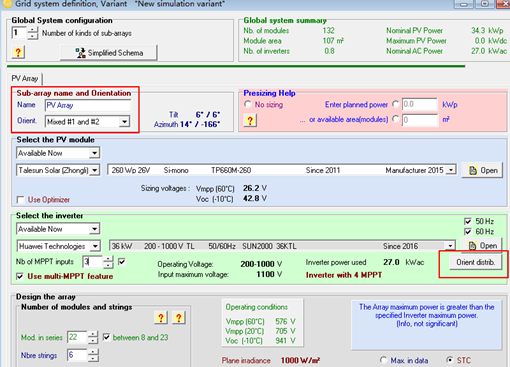
▲Figure 8
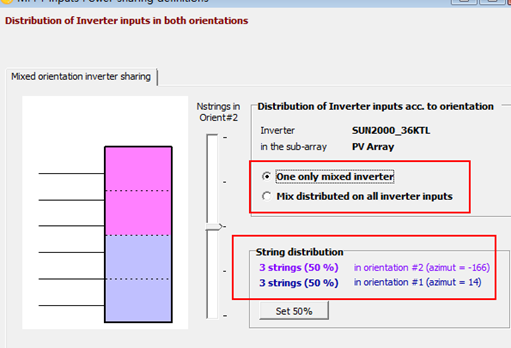
▲Figure 9
4. Regarding the upgrade issue of PVsyst.
[Answer from Teacher Yang]: Currently, PVsyst software does not automatically upgrade. Users need to download the new version, overwrite the old version, or install it side by side. Currently, PVsyst supports free upgrades within one year, after which paid upgrades are required.
Tip: Interested readers can refer to past articles to search for issues encountered while using PVsyst.
Article Comments(0)